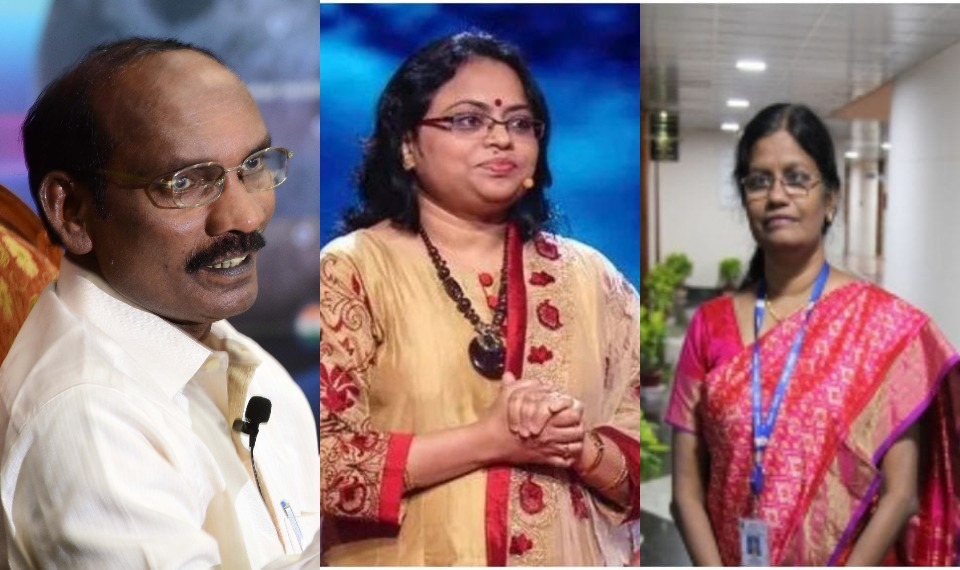
What makes a Chandrayaan scientist? Humble roots, rocketing passion

The phrase, “it’s not rocket science”, meaning something which is simple and not as intricate as rocket science, came into American lexicon in the early 1940s when the US was sourcing extremely smart people to develop its rocket technology. Americans imported a group of German military technologists to develop their space and military rockets. That was a time when clever and bright people were migrating to the United States which included another German — Albert Einstein.
India, which is now one of the four nations in the world with acknowledged prowess in space technology, will be soft landing its own vehicle on the moon in the next eight weeks. And its biggest achievement is that all its scientists are home grown— some of them rising from very humble origins.
True to roots
Kailasavadivoo Sivan, the man who helms Indian Space Research Organisation or Isro, the Indian equivalent of American NASA, is one such person. Son of a farmer and the first graduate in his family, Sivan studied in a village school. He had to toil in the fields, lending a helping hand to his father to support their family of six which included his parents and three siblings. His father had to sell off a part of their land to raise money to send young Sivan to study aeronautical engineering at Madras Institute of Technology or MIT in Chennai.
Sivan, talking about his early days in an interview had said that neither space nor rocket studies were on his mind then. Though a bright student who would score 100 out of 100 in all science subjects, he had to satisfy himself studying undergraduate course in a nearby district. Later he did his masters in aerospace engineering from IISc in Bangalore and PhD from IIT Mumbai.
Sivan who did a stint at Vikram Sarabhai Space Institute as its director, took over the reins of Isro last year as its chairman. Over the decades, he built a large body of work. He strategised India’s Mars project and was involved in building of a variety of rockets – from PSLV, GSLV to cryogenic engines – which are extremely efficient. Initially, India imported cryogenic engines from Russia, but had to fall back on its own scientists when sanctions were imposed on dual use technologies.
Sivan went to the same college as Dr Abdul Kalam, India’s Missile Man who later rose to the office of President. Kalam, son of an imam had sold newspapers in his early days to supplement his family’s income.
Rocket man
If Kalam was fondly called the Missile Man of India, Sivan earned the moniker of Rocket Man, for his expertise and contribution to the development of cryogenic rockets. Apart from the end to end production of Chandrayaan-2, Sivan has been instrumental in the development of space vehicles and has helmed vital projects such as the Polar Satellite Launch Vehicle (PSLV) project. He has been instrumental in the end to end mission planning, designing, integration and analysis of the project.
SITARA, the 6D trajectory simulation software, is his finding, which provides the real-time and non-real time trajectory simulations of all Isro launch vehicles. He has also developed the day-of launch wind biasing strategy which enables in launching rockets irrespective of time, weather or wind conditions.
When he joined the GSLV Project in 2011 as project director, he achieved the most successful GSLV flight with indigenous cryogenic stage. Known as a key figure in developing the indigenous Geosynchronous Satellite Launch Vehicle MK II, he has often been credited for India’s achievement of launching 104 satellites in a single mission, setting a world record, on February 14, 2017.
Squad of wonder women
Besides its ambitious plan to soft land on the Moon, Chandrayaan-2 has also been appreciated for being steered by a group of women scientists who according to reports form 30 per cent of the team. Taking the command are Muthayya Vanitha, the project director and Ritu Karidhal, the mission director. Just like Sivan, both hail from humble backgrounds and haven’t relied on foreign degrees to chase their passion to probe the space.
Vanitha, a resident of Chennai, has been associated with Isro for 32 years. She joined as an electronic system engineer and slowly went up the rung, after working in laboratory, testing carts, hardware, designing and development departments, as she told NDTV in an interview.
Daughter of engineers, she, however, was initially reluctant to take up the position of project director which involves a grinding schedule and years of work, until a senior convinced her to rethink her decision. Having had previous experience in data operation for India’s remote sensing satellites, she was awarded the Best Woman Scientist Award by the Astronautical Society of India in 2006.
Karidhal, also nicknamed Rocket Woman, graduated in physics from Lucknow University before doing her master’s degree from Indian Institute of Sciences. She joined Isro in 1997 after getting a degree in Aerospace Sciences. Her sister in a recent interview reminisced how Karidhal as a student would gaze at the stars and wonder what lies beyond.
And she did reach for the stars or what lay beyond. A recipient of the young scientist award in 2007, an award conferred on her by the president, Karidhal played a key role in the launch of Mangalyaan in 2012. She was in-charge of conceptualisation and execution of the craft’s onward autonomy system. Her responsibility as mission director for Chandrayaan-2 involves supervising the mission and coordinating with agencies for its completion.
Sivan and his ilk may not appear like the filmed versions of space scientists and astronauts that we have been fed over years, but they have certainly proved that the Indian education system isn’t as impoverished as it is made to look in debates and protests. Because, they didn’t rely on a foreign degree or a NASA stint to be the brains behind “India’s rocket science”.


